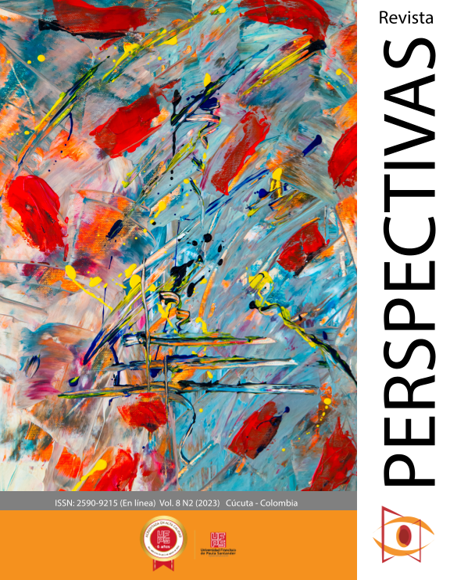Odología y entornos virtuales: Reflexiones sobre la reconfiguración espacio – territorial en el aislamiento social
Odology and virtual environments: Reflections on spatial-territorial reconfiguration in social isolation
Main Article Content
The article presents the reflections and results of the investigative exercise carried out during the year 2020 on Odology, the study of routes and flows from architecture and anatomy, referring to Hodos, a Greek notion alluding to the path and movement itself physically disrupted due to the compulsory social isolation experienced in our country and in the world in the year 2020, which led to the establishment of new forms of relationship based on the movement and journey of an environment that ostensibly accentuated its presence: the virtual space. The research team, made up of professionals from the field of Social Communication and Education, describe the methodology used in the development of the exercise, from a qualitative approach to Urban Imaginaries proposed by Armando Silva, taking two Case Studies (CA) from the corpus. formed, to conclude with the analysis derived from the illustrations and visual texts designed by the participants from the communicative content disseminated around the theme of the present investigation referred to describing the imaginaries of the university academic space of students assigned to the research chair in Armenian universities before and during the social isolation decreed by the national government of Colombia.
Downloads
Publication Facts
Reviewer profiles N/A
Author statements
- Academic society
- Universidad Francisco de Paula Santander
- Publisher
- Universidad Francisco de Paula Santander
Article Details
Beltrán, M. L., Falcón, R., & Gabaldón, J. (2020). Propuesta de atención al alumnado en situación de aislamiento escolar y social. El Diario de la Educación. https://eldiariodelaeducacion.com/2020/03/24/propuesta-de-atencion-al-alumnado-en-situacion-de-aislamiento-escolar-y-social/
Berger, P. L., & Luckmann, T. (2015). La construcción social de la realidad. Amorrortu Editores.
Bocanegra, E. M. (2017). Imaginarios educativos y espacios arquitectónicos. Universidad Externado de Colombia.
Carlón, M. (2020, 19 de abril). El virus no vino solo. Hipermediaciones. https://hipermediaciones.com/2020/04/19/el-virus-no-vino-solo/?fbclid=IwAR2jgiEelhq7Cjw5_amxahkryj6peYH7o8aiFGWFuYO9OhBH6mBXNqj8siw
Delgado, M. (2007). Sociedades movedizas. Pasos hacia una antropología de la calle. Anagrama.
Deslauriers, J. P. (2004). Investigación cualitativa. Guía práctica. Editorial Papiro.
Downs, R., & Stea, D. (1977). Maps in minds: Reflections on cognitive mapping. Harper & Row.
Echeverría, J. (2000). Un mundo virtual. Plaza y Janés.
Educación 2020. (2020, 20 de abril). Educación 2020 presenta 19 propuestas para la educación escolar en tiempos de pandemia COVID-19. https://www.educacion2020.cl/noticias/educacion-2020-presenta-19-propuestas-para-la-educacion-escolar-en-tiempos-de-pandemia-covid-19/
Feixa, C. (2000). Generación @ la Juventud en la era digital. Nómadas, (13), 75-91.
Galeano, M. E. (2021). Investigación cualitativa. Preguntas inagotables. Universidad de Antioquía.
González, P. (2004). Imágenes de ciudad: Percepción y cognición en niños de Bogotá. Alcaldía Mayor de Bogotá.
Lévy, P. (2011). Cibercultura. La cultura de la sociedad digital. España: Anthropos.
Luri, G. (2018). El deber moral de ser inteligente. Conferencias y artículos sobre la educación y la vida. Plataforma Editorial.
Lynch, K. (2015). La imagen de la ciudad. España: Editorial Gustavo Gil.
Ortíz, R. (1998). Otro Territorio. Ensayos sobre el mundo contemporáneo. Convenio Andrés Bello.
Silva, A. (1996) La propuesta de los Imaginarios Urbanos. Tablero, Revista del convenio Andrés Bello, (20).
Silva, A. (2006). Imaginarios Urbanos (5ª. ed.). Arango Editores.
Villafuerte, P. (2020, 19 de marzo). Educación en tiempos de pandemia: COVID-19 y equidad en el aprendizaje. https://observatorio.tec.mx/edu-news/educacion-en-tiempos-de-pandemia-covid19/
Winocur, R. (2009). Robinson Crusoe ya tiene celular. La Conexión como espacio de control de la incertidumbre. Siglo XXI y Universidad Autónoma Metropolitana.








